Bruce Dowbiggin
Can Rory and Tiger Save The PGA Tour From Greg Norman?

Sign up today for Not The Public Broadcaster newsletters. Hot takes/ cool slants on sports and current affairs. Have the latest columns delivered to your mail box. Tell your friends to join, too. Always provocative, always independent.
The PGA Tour season wound up with a bang for Rory McIlroy, who won US$18 million for capturing the Fed Ex Cup— and maybe Player of the Year, too. Otherwise it was, as the British say, a damp squib for the preeminent golf body in the world.
Even as the final putt dropped on the 18th hole, word had dropped of more frontline stars defecting to the upstart LIV Golf Tour. Open Championship/ Players Championship winner Cam Smith, Marc Leishman, Cameron Tringale, Anirban Lahiri, Joaquin Niemann, Harold Varner III and possibly Mito Pereira are headed to the lucrative rival circuit. And banishment from all things PGA Tour.
In one fell swoop that could rob the World Team for the upcoming Presidents Cup of at least four stars when they tee it up at Quail Hollow on Sept. 19. Added to the other international players (Louis Oosthuizen, Charl Schwartzel) who’ve already jumped to the Saudi-backed LIV it turns the showpiece event into a walkover.
Worse for the PGA Tour, it was forced by its remaining major stars into making accommodations that sound suspiciously like those that were being demanded by LIV CEO Greg Norman as far back as the 1980s. Namely, more emphasis on the Tour stars playing together more often, innovative formats, global outreach and tons of new money.
As we foresaw on Feb. 3, 2020, “It’s not a new idea in golf. Investors using former world number one Greg Norman as their front man tried the same tactic as far back as the 1980s. But the combination of Norman’s reputation with fellow pros and the lack of a digital media marketplace stalled the idea. This time, with integrated media and innovation in travel, it could succeed.
Rory McIlroy confirmed that he’s talked to the people behind the idea to create a league of extraordinary golfing gentlemen. “You know, it’s a hard one. … I love the PGA Tour, but these guys have exploited a couple of holes in the system, the way golf at the highest level is nowadays and how it’s sort of transitioned from a competition tour to entertainment. Right? It’s on TV, it’s people coming out to watch. It’s definitely a different time than what it was before.”
McIlroy resisted the LIV seduction and is now one of the hardliners left on the PGA Tour. He partnered with Tiger Woods and a handful of other elite players in pressuring the PGA Tour to make big changes if it wants to survive as the preeminent Tour. The plan— it goes into effect in January 2023— means bribing the superstars into playing more than just the four majors and a handful of other prestige events.
As Sports Illustrated explains, the new template will create “Two tiers of tournaments, one of “elevated events” featuring the best players in the world and larger purses, and one for everybody else on Tour. It’s not quite that simple, and of course players can move up and down based on how they play each year. But that is the gist of it.
The Tour also doubled its Player Impact Program payout from $50 million to $100 million. This will all be better for the best players, and the Tour had to keep the best players. But whether it is better for the sport is to be determined.”
The PIP slush fund will be based on internet searches, general awareness, golf fan awareness, media mentions and broadcast exposure. And, ending a long meritocratic tradition of no guaranteed money on the Tour, fully exempt members — Korn Ferry Tour and above — will be guaranteed a league minimum of $500,000. There will also be $5,000 to players who miss the cut.
So, after the new 20 “prestige” events— not including the RBC Canadian Open— that will leave 15 openings for other tournaments on the schedule. If The Canadian Open wishes to make it up with the big boys their sponsor RBC will likely have to pony up US $20 M in prize money. Even that won’t guarantee the Canadian Open a good midsummer date or a respectable field. (The Canadian government has indicated it will bump up its contribution to the Open and the LPGA CP Championship.)
Now squeezed between two “elite” events players will flock to, the Open will only dream of the quality field it had in 2022 with McIlroy winning the title as St. George’s in Toronto.

Anyone counting on the Saudis getting bored with golf and dumping LIV is likely going to wait a while. To ratchet pressure on those who choose the Bobby Hull route of changing leagues, PGA Tour commissioner Jay Monahan declared a permanent ban from all its events for defectors like Smith Phil Mickelson, Dustin Johnson and Bryson DeChambeau. The Tour will also pressure the organizers of the four majors to honour those bans. For the foreseeable future— or unless a court allows for players to mix-and-match Tours— it’s cold war. Think NHL versus WHA.
As a footnote, it would be remiss to ignore the impact of Tiger Woods in all this. The aging, injured supernova was integral in getting the Tour to adapt. He knows he still moves the needle on TV, and thus will get PIP money even if he only plays a few tournaments a year.
He and McIlroy also got the Tour to accept their new prime-time venture that will feature 18-hole events played on a virtual course across a two-hour window. The 15 regular-season matches will be contested by six three-man teams of PGA Tour golfers. Woods and McIlroy are already on board with 16 more spots to fill before the inaugural season kicks off in January 2024.
The time for talk is over. The sides are dug in. What happens next is a coin flip. But if money wins the day, place your bests ion the Saudis getting some—or all— of what they and Greg Norman want.
Bruce Dowbiggin @dowbboy is the editor of Not The Public Broadcaster (http://www.notthepublicbroadcaster.com). A two-time winner of the Gemini Award as Canada’s top television sports broadcaster, he’s a regular contributor to Sirius XM Canada Talks Ch. 167. Inexact Science: The Six Most Compelling Draft YearsIn NHL History, , his new book with his son Evan, was voted the eighth best professional hockey book of by bookauthority.org . His 2004 book Money Players was voted seventh best, and is available via http://brucedowbigginbooks.ca/book-personalaccount.aspx
Bruce Dowbiggin
How Did PEI Become A Forward Branch Plant For Xi’s China?
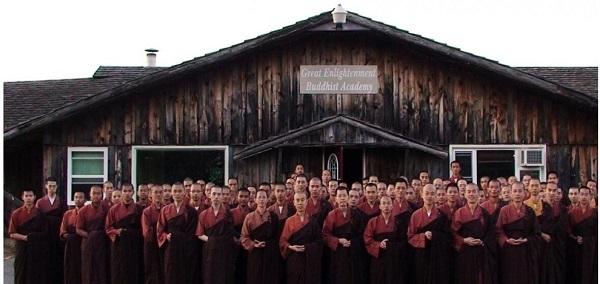
scoopercooper DEA Busts Canadian Narco Whose Chinese Supplier Promised to Ship 100 Kilos of Fentanyl Precursors per Month From Vancouver to Los Angeles
https://x.com/scoopercooper/status/1945489327892365716
The Chinese Communist Party is flooding America with dirty pesticide marijuana disguised as THCa hemp flower and hemp-derived products sold in smoke shops.
Official Silence on Medical Waste From PRC-Linked Monasteries Must Be Broken .
We were talking very recently to a Toronto friend about the threat of drug trafficking—in particular fentanyl— to the U.S. as a threat to Canada’s sovereignty. This businessman, who does considerable international trade, shrugged and said it’s no big deal. He’d heard the Yanks had only caught 59 pounds at the border between 2022-2024. To his eye, things were under control.
This statistic was, of course, the Liberals’ standard talking point in the 2025 election— part of Mark Carney’s What, Me Worry? appeal about China to anxious Boomers. My friend still repeating this twaddle is a tribute to the staying power of the Liberal’s media stranglehold in the face of evidence that has been out there courtesy of reporters such Sam Cooper and Garry Clement since 2015.
As the above stories illustrate drug trafficking and money laundering are believed to be rampant in Carney’s Canada— with the Chinese in the forefront and immigrant students-turned-truckers hauling the narcotics across the border. The fentanyl version of El Chapo and other confederates live openly in the Toronto area. As the recent bust promising 100 kilos a month to L.A. makes clear, the 59-pound fentanyl deflection insults the work of those who have been labouring under dangerous conditions to highlight the Liberals’ lassitude on crime.
As we wrote when Justin Trudeau was still swanning around as PM: “The sitting Canadian prime minister, who praised the Chinese form of governing before he reached the PM post, has been seen in photos with underground Asian gang figures. As were previous Liberal leaders like Jean Chretien who made no secret of his lust for the Chinese market. Chinese money was used to build extensively in Chretien’s Shawinigan riding.
Donations to Trudeau from all across Canada constituted up to 80 percent of the riding’s contributions that year. In May 2016, one such fundraiser saw Trudeau hosted by Benson Wong, chair of the Chinese Business Chamber of Commerce, along with 32 other wealthy guests in a pay-for-access event. The patterns exposed by Cooper finally prompted a commission by Quebec justice Marie-Josée Hogue looking into Chinese interference in Trudeau’s successful 2019 and 2021 elections.
Hogue later reported that Chinese interference in those elections did undermine the rights of Canadian voters because it “tainted the process” and eroded public trust. So petrified was Trudeau of the full Hogue Report that he prorogued parliament for three months and handed in his resignation rather than test his 22 percent approval rating in a Canadian election.”
What the rest of the world knows— but Canadian officials refused to tell their citizens during the federal election campaign— is that Canada has been corrupted by openly approving of China’s method of controlling their citizens worldwide and placing operatives within Canada’s government.

The story of how Liberal candidate Paul Chiang told a Chinese-language media news conference that people could cash in if they turned in Conservative Joe Tay in to the Chinese consulate in Toronto is illustrative. At first Carney called it a “lapse in judgment”, but then he let Chiang continue as a candidate. After pushback, Peter Yuen, was appointed the Liberal party’s nominee in the Toronto-area riding. Yuen has ties to Chinese agencies that seek to control Chinese citizens in Canada. (He lost in the April vote.)
Equally concerning is how the CCP has turned peaceful PEI into a forward operating base. On a recent trip to PEI we were told by local sources about the Buddhist monasteries being allowed under the not-so-watchful eye of various layers of government and the paid-for Media Party. Using bags full of dirty cash, the Bliss & Wisdom Buddhists have bought up large tracts of PEI farmland and replaced it with a front for the CCP to launder dirty money and infiltrate its people into the community. (The Buddhists deny this.)
Meetings have drawn hundreds of concerned Islanders (but not, until recently, many politicians or media). The latest outrage was the discovery of medical waste left behind on a rural property. It is alleged that it stems from a tuberculosis outbreak among the monks, where still-infectious monks were quietly sent home to China on public airlines wearing masks. Fires that destroyed two buildings nearby are alleged to have been to protect against health officials finding evidence of TB on site.
Media attention from outside PEI is now pushing officials to investigate the attempt to plant “police” stations to monitor expatriate Chinese and affect elections. Former RCMP officer Garry Clement has done extensive research on this file with Michel Juneau-Katsuya and Dean Baxendale. For more detailed description on the infiltration and political manipulation read Canada Under Siege: How PEI Became A Forward Operating Base of the Chinese Communist Party.

These are dramatic times as its appears that Chairman Xi might be on his way out as the leader of China. Any changes in the regime are just rumours at the moment. But Xi has overseen this massive campaign to extend Chinese outreach globally. That it would include even tiny PEI is shocking. The hope there is that with the Chinese economy under strain a new ruling elite in Beijing might pull back on the worldwide network as an expensive gamble.

That the China cheering club in the Liberal party in involved is less surprising since the outreach by Trudeau’s father Pierre in the 1970s. But with tariff issues dominating the news it would do well for Canadians to sober up to how compromised they are by the Chinese. That— not Donald Trump— is their biggest challenge.
Bruce Dowbiggin @dowbboy is the editor of Not The Public Broadcaster A two-time winner of the Gemini Award as Canada’s top television sports broadcaster, his new book Deal With It: The Trades That Stunned The NHL And Changed hockey is now available on Amazon. Inexact Science: The Six Most Compelling Draft Years In NHL History, his previous book with his son Evan, was voted the seventh-best professional hockey book of all time by bookauthority.org . His 2004 book Money Players was voted sixth best on the same list, and is available via brucedowbigginbooks.ca.
Bruce Dowbiggin
The Covid 19 Disaster: When Do We Get The Apologies?

Breaking: Drs. Bonnie Henry and Theresa Tam have been appointed to the Order of Canada in recognition of their role in the country’s response to the COVID-19 pandemic.
And so the game of covid liar’s poker has more winners. It’s like awarding the captain of the Titanic the Nobel Prize for his work on floatation. As we now know these two— and the other WHO finger puppets in Canada— made the Covid 19 episode worse, not better, with their prescription for panic, positives and punishment. Even as they knew the truth about the limits of the virus and the efficacy of vaccines they continued to spew fallacious PCR data on the extent of the sickness and who was at risk.
Put simply, to protect vulnerable seniors they said kids were also at great risk. Which was unconscionable.
In this they encouraged Justin Trudeau in his worst instincts, combining his father’s insouciant disregard for civil rights (sending in the police) with his mother’s mental stability. Propped up by Team Tam and its U.S. allies such as Anthony Fauci, this hysteria peaked with a sequestered PM crushing the Truckers Convoy’s vaccine protest with emergency measures and destruction of civil liberties.
Lest you wonder, this overreach was recognized at the time. Justice Maclean wrote at the trial of Convoy organizers, “Defendants & other persons remain at liberty to engage in a peaceful, lawful & safe protest”. On Feb. 16, he continued a no-honking order, again writing: “Defendants & other persons remain at liberty to engage in a peaceful, lawful & safe protest.”
The leaders of the Convoy, lynched by Canadian media’s phoney claims of right-wing American interference, are still fighting jail time on charges of nuisance. While violent criminals are routinely released on bail or absolved.
Justice Richard Mosley later concluded that while the convoy was a disruption of public order, it didn’t constitute a national emergency and invoking the act “does not bear the hallmarks of reasonableness — justification, transparency and intelligibility.” But in real time Team Tam made no attempts to correct the wilder misgivings about Covid (lockdowns, mandatory vaccines). Trudeau was given a hall pass. Needless to say the purchased media made things infinitely worse regurgitating these mistakes.
In short, they knew better but hid the truth. But why pick on Henry and Tam? Under Trudeau and his wingman Jagmeet Singh this was the golden age of lies and prevarications in Canada and the U.S. No apologies were ever offered when the truth emerged.
As we’ve noted before, Trudeau cried with a teddy bear carefully positioned over 751 alleged unmarked graves in a known Catholic cemetery that the local Cowessess band abandoned. The Liberal government knew the claim of 215 “children’s graves” was false, and still ran with it to get Trudeau his photo-op. Naturally the CBC Media Party played (and still plays) accomplice in this farce as the Canadian flag was lowered to half-mast for six months and Trudeau ratted out Canada at the UN as a genocidal state.
There were more, plenty more Trudeau scandals that media endorsed and then stood by even as the truth was revealed. SNC Lavalin. We Charity. Arrive Can app. Firing indigenous justice minister. Chinese drug infiltration/ money laundering. Nazi Celebrated in Parliament. Welcome To Canada immigration. Nova Scotia massacre. McKinsey Consultation. Blackface. And so on.
And were there apologies when it came time to make the Trudeau Liberals accountable? No, they staged a media circus over Donald Trump’s assertion of 51st state. All the fake news and deliberate lies went poof, allowing Mark Carney to seamlessly assume the PM job.

Lest We Forget Pt. 2 it was not exclusive to Canada. As we are now learning: Barack Obama and Joe Biden sat in an August 3, 2016 Situation Room briefing and said, yeah, let the highest officials in our administration fabricate evidence to frame the opposing party candidate Donald Trump. Obama. Biden. Comey. McCabe. Strzok. Page. Rice. Etc.
Knowingly using the faked Clinton campaign ‘Steele Dossier’ hoax, they launched a federal investigation into the Trump presidential campaign that lasted three years after Trump was sworn in as the nation’s 45th President. Arresting and jailing his partners and colleagues. Inventing fake stories for their media enablers. Let’s repeat that. Saint Obama knew there was criminal activity in the process but let his henchmen try to fix an election.

And when the ruse was uncovered no one apologized. No one in authority was fired or jailed. The Pulitzer Prizes awarded to the NT Times and Washington Post for disseminating the DEMs scandal were not rescinded. Nor were they given back by the lying newspapers.
The concerted frauds of the same U.S. DOJ, FBI and State Departments were fed by media and accepted by gullible publics in Canada and America. The fantastical 2020 election results were likewise drummed into the public irrespective of the sudden “appearance” of 27 million new votes during a pandemic.
It was all a fitting preamble to the 2020-2024 Biden senility scandal with Democrats running a man they knew was in full dementia. In the 2020 election Biden was hidden from public view, the better to let media attack Trump for spurious charges launched by partisan DNC attorneys in Georgia, New York and DC. Even then it took the suppression of Hunter Biden’s incriminating laptop just prior to the election to get his father elected.

The dance of denial continued in Biden’s term as he physically and mentally deteriorated before the American public. But inquiries about who was running the government if not Biden were harshly suppressed. Media lackeys noted he was sharp as a tack mentally and in tip-top physical condition when he wasn’t falling down stairs.
It took the stunning 2024 debate debacle with Trump to strip away the lies about Biden’s health, now said to be advanced prostate cancer and Parkinson’s. The media, caught in their own lies about Biden’s condition, offered no apologies and tried to blame Biden’s stutter for the performance.. Right.
These were the two greatest U.S. hoaxes from people who’d cried hoax incessantly. They were hardly the only abuse of public trust. Some of the perpetrators are said to now be under investigation— even as they hand out awards to each other. The media’s credibility is shattered and yet they still blame others. Jaded voters are taking a “we’ll see” approach. But expectations of any change in DC or Ottawa are limited.
As Stephen Taylor posted on X: “Turns out for Liberals, ‘elbows up’ just means ‘noses up’ like it always has.”
Bruce Dowbiggin @dowbboy is the editor of Not The Public Broadcaster A two-time winner of the Gemini Award as Canada’s top television sports broadcaster, his new book Deal With It: The Trades That Stunned The NHL And Changed hockey is now available on Amazon. Inexact Science: The Six Most Compelling Draft Years In NHL History, his previous book with his son Evan, was voted the seventh-best professional hockey book of all time by bookauthority.org . His 2004 book Money Players was voted sixth best on the same list, and is available via brucedowbigginbooks.ca.
-
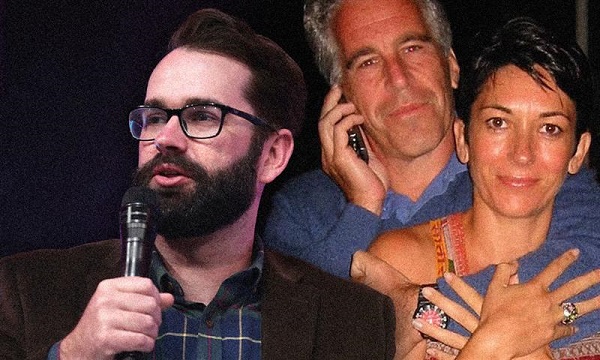
 International2 days ago
International2 days agoMatt Walsh slams Trump administration’s move to bury Epstein sex trafficking scandal
-
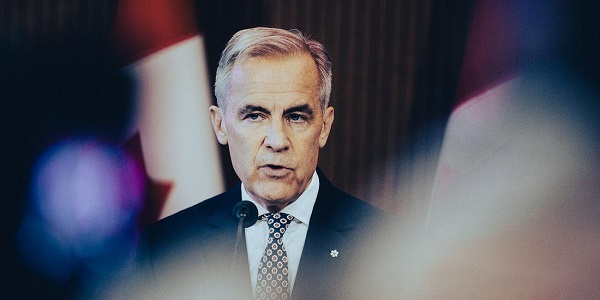
 National2 days ago
National2 days agoDemocracy Watch Blows the Whistle on Carney’s Ethics Sham
-

 Energy1 day ago
Energy1 day agoIs The Carney Government Making Canadian Energy More “Investible”?
-

 Immigration1 day ago
Immigration1 day agoUnregulated medical procedures? Price Edward Islanders Want Answers After Finding Biomedical Waste From PRC-Linked Monasteries
-
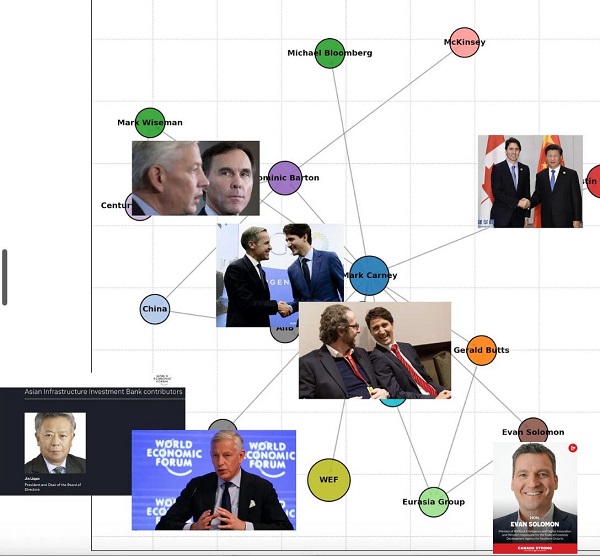
 Business1 day ago
Business1 day agoDemocracy Watchdog Says PM Carney’s “Ethics Screen” Actually “Hides His Participation” In Conflicted Investments
-
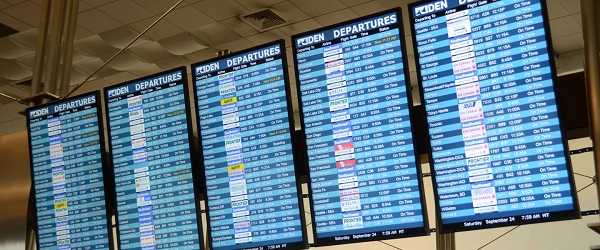
 Business1 day ago
Business1 day agoCompetition Bureau is right—Canada should open up competition in the air
-
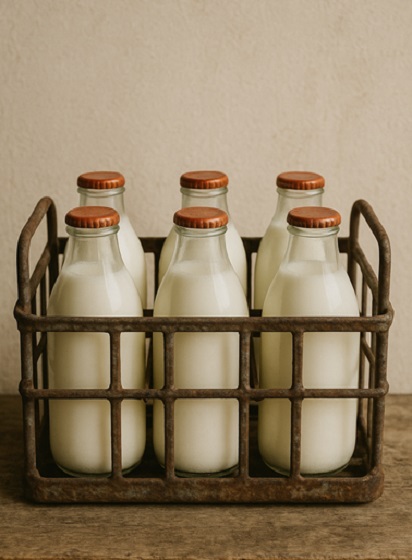
 Business1 day ago
Business1 day agoIt’s Time To End Canada’s Protectionist Supply Management Regime
-
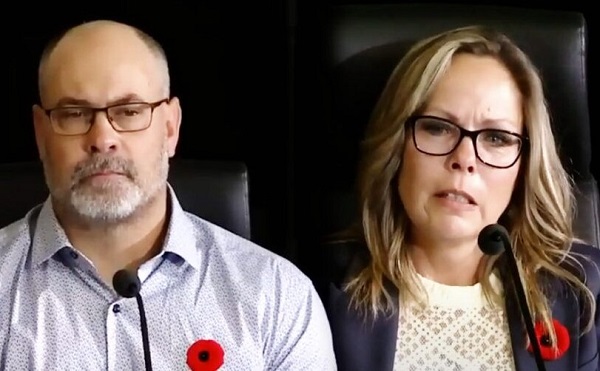
 COVID-191 day ago
COVID-191 day agoFreedom Convoy leaders’ sentencing hearing to begin July 23 with verdict due in August






